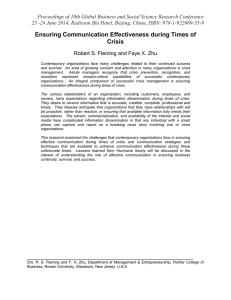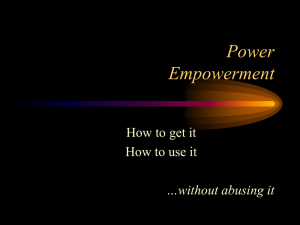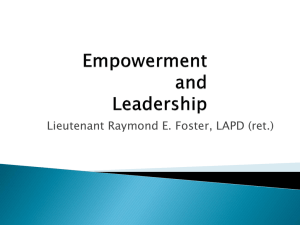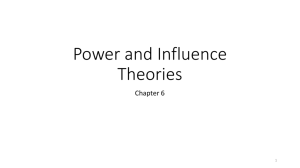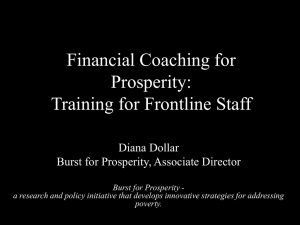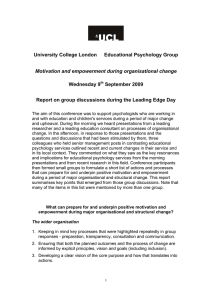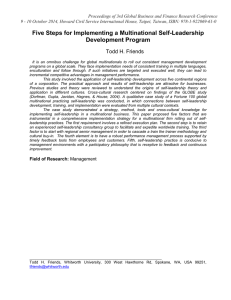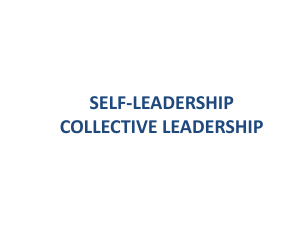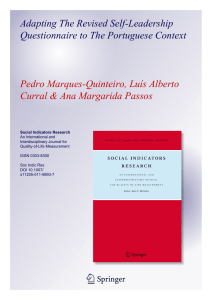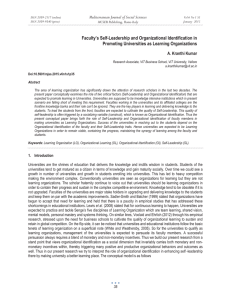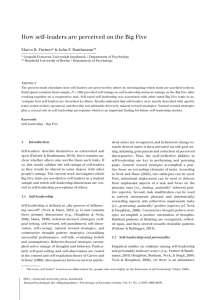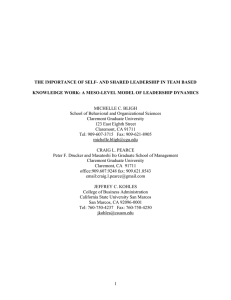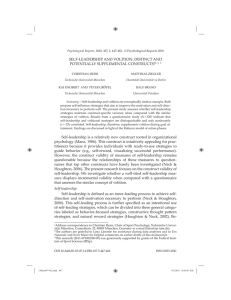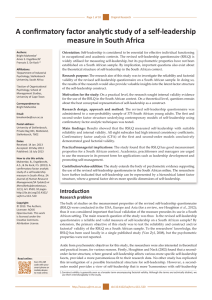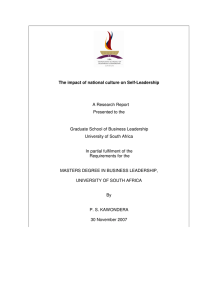TEAMS AND DESIGNATED LEADERS
advertisement
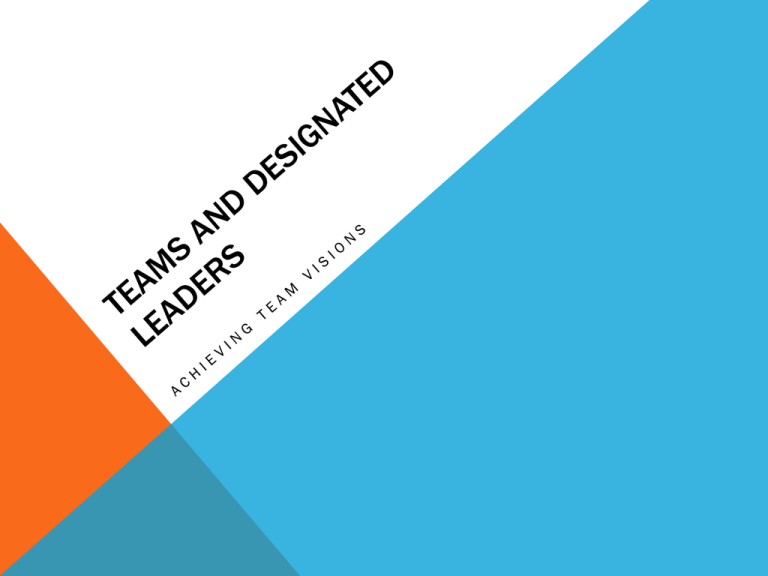
SOURCES OF POWER Traditional Control Models Coercive power Reward power Legitimate power Expert power Referent power Two choices re whether to communicate Communicate data > decisions or understanding? What manner of communication? CONTEMPORARY EMPOWERMENT MODELS Team Empowerment Members are highly motivated Tasks are meaningful Feel autonomy Develop self-efficacy and confidence Sense of ownership Integrative Power APPROACHES TO LEADING Situational-contingency Approaches > vary style based on situations, tasks, purposes, members, and leader Life-cycle Theory > leader adapts to the maturity level of the group or team Telling Selling Participating Delegating APPROACHES TO LEADING (CONT’D.) Classic Leadership Styles Laissez-faire Autocratic Democratic APPROACHES TO LEADING (CONT’D) Contemporary Approaches Transactional leadership Transformational Visionary leadership Charisma Inspiration Intellectual stimulation Individualized consideration EXPECTATIONS OF LEADERS Members’ Expectations Stereotypes Exceptions to the rule Leaders’ Self-Expectations Real vs. virtual Realistic vs. unrealistic RESPONSIBILITIES OF LEADERS Linking and Buffering Coordinating Resource acquisition Motivating and Coaching Envisioning Developing others’ self-leadership Setting standards Guiding ongoing assessment Coaching RESPONSIBILITIES (CONT’D.) Managing and Moving Planning and following through Ensuring processes via standards Avoid politics Personal commitment Manage priorities Fair and impartial Confront and resolve issues Open to new ideas and information RESPONSIBILITIES (CONT’D. ) Ensuring thru specific skills (cont’d.) Facilitate participation Define roles Keep discussion coherent Control discussion inhibitors LEARNING TO LEAD Identify role models > observe and analyze Identify your own strengths and build on them Identify what you would like to become your new strengths Seek opportunities to practice leading

